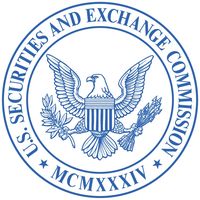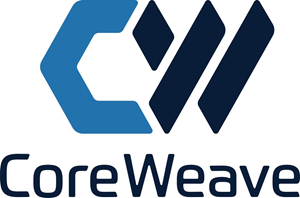CoreWeave's Rocky Road: A Cautionary Tale for IPOs in the Tech Sector
April 1, 2025, 3:36 pm

Location: United States, New York
Employees: 1001-5000
Founded date: 2005
Total raised: $3.53B

Location: United States, District of Columbia, Washington
Employees: 1001-5000
Founded date: 1934
Total raised: $392.5M

Location: United States, New York
Employees: 51-200
Founded date: 2017
Total raised: $12.77B
The stock market is a fickle beast. Just ask CoreWeave. After a much-anticipated debut, the artificial intelligence cloud provider's shares plummeted nearly 10% in just two days. This sharp decline raises eyebrows and questions about the health of the IPO market, especially for tech companies.
CoreWeave's initial public offering (IPO) was touted as a beacon of hope. It was the largest tech IPO since 2021, signaling a potential revival in a market that had been largely dormant. The company, which specializes in renting out access to Nvidia graphics processing units (GPUs), had high expectations. It sold shares at $40, opening at $39, and closed flat on its first day. But the optimism was short-lived. By the end of the second trading day, shares had dropped to about $37.
This decline is more than just a number. It reflects a broader sentiment in the market. Investors are wary. The tech-heavy Nasdaq Composite has seen a decline of over 10% year-to-date. CoreWeave's offering was supposed to break the ice, but it instead highlights the ongoing skepticism surrounding tech IPOs. The company’s heavy reliance on Microsoft, which accounted for 62% of its revenue last year, raises red flags. A single customer shouldn’t hold that much power over a business.
The IPO itself was a gamble. CoreWeave initially aimed for a price range of $47 to $55, which would have raised around $2.5 billion. However, as market conditions soured, the company downsized its offering to 37.5 million shares. The result? A total raise of $1.5 billion, but with a cost. The underwriting fees were a meager 2.8%, the lowest for a billion-dollar tech IPO since Facebook's record-setting debut in 2012.
Wall Street banks, including Morgan Stanley, JPMorgan Chase, and Goldman Sachs, were hoping for a windfall. Instead, they received a paltry $42 million in fees. This meager payout is a stark reminder that the excitement surrounding an IPO can quickly turn into disappointment. Investors are cautious, and banks are feeling the pinch.
The economic landscape is turbulent. Inflation and rising interest rates have cast a long shadow over the market. CoreWeave's IPO was supposed to signal a recovery, but it has instead reinforced the idea that the market is still grappling with uncertainty. The company’s history adds another layer of complexity. Originally founded as Atlantic Crypto in 2017, it pivoted from cryptocurrency mining to AI infrastructure as digital asset prices fell. This shift raises questions about the sustainability of its business model.
Despite a staggering revenue increase of 737% last year, CoreWeave reported a net loss of $863 million. This contradiction is troubling. Rapid growth is impressive, but losses at this scale are hard to ignore. Investors want to see a path to profitability, not just impressive revenue figures.
The competition is fierce. CoreWeave faces significant rivals, including tech giants like Microsoft, Amazon, Google, and Oracle. The landscape is crowded, and the stakes are high. The company’s reliance on Nvidia technology adds another layer of risk. If Nvidia’s fortunes wane, so too could CoreWeave’s.
In the grand scheme, CoreWeave's IPO serves as a cautionary tale. It highlights the challenges facing tech companies in a volatile market. The initial excitement can quickly turn to skepticism. Investors are looking for stability, not just potential.
The broader implications are significant. CoreWeave's struggles may deter other tech companies from pursuing IPOs. If investors remain skittish, the IPO market could face a prolonged drought. The hope for a resurgence in tech IPOs may be dashed, leaving companies to reconsider their strategies.
In conclusion, CoreWeave's rocky debut is a microcosm of the current state of the tech IPO market. The excitement of a new offering can quickly fade, revealing the underlying challenges. Investors are cautious, and the road ahead is uncertain. As the market continues to evolve, companies must navigate these turbulent waters with care. The lesson is clear: in the world of IPOs, the thrill of the chase can quickly turn into a sobering reality.
CoreWeave's initial public offering (IPO) was touted as a beacon of hope. It was the largest tech IPO since 2021, signaling a potential revival in a market that had been largely dormant. The company, which specializes in renting out access to Nvidia graphics processing units (GPUs), had high expectations. It sold shares at $40, opening at $39, and closed flat on its first day. But the optimism was short-lived. By the end of the second trading day, shares had dropped to about $37.
This decline is more than just a number. It reflects a broader sentiment in the market. Investors are wary. The tech-heavy Nasdaq Composite has seen a decline of over 10% year-to-date. CoreWeave's offering was supposed to break the ice, but it instead highlights the ongoing skepticism surrounding tech IPOs. The company’s heavy reliance on Microsoft, which accounted for 62% of its revenue last year, raises red flags. A single customer shouldn’t hold that much power over a business.
The IPO itself was a gamble. CoreWeave initially aimed for a price range of $47 to $55, which would have raised around $2.5 billion. However, as market conditions soured, the company downsized its offering to 37.5 million shares. The result? A total raise of $1.5 billion, but with a cost. The underwriting fees were a meager 2.8%, the lowest for a billion-dollar tech IPO since Facebook's record-setting debut in 2012.
Wall Street banks, including Morgan Stanley, JPMorgan Chase, and Goldman Sachs, were hoping for a windfall. Instead, they received a paltry $42 million in fees. This meager payout is a stark reminder that the excitement surrounding an IPO can quickly turn into disappointment. Investors are cautious, and banks are feeling the pinch.
The economic landscape is turbulent. Inflation and rising interest rates have cast a long shadow over the market. CoreWeave's IPO was supposed to signal a recovery, but it has instead reinforced the idea that the market is still grappling with uncertainty. The company’s history adds another layer of complexity. Originally founded as Atlantic Crypto in 2017, it pivoted from cryptocurrency mining to AI infrastructure as digital asset prices fell. This shift raises questions about the sustainability of its business model.
Despite a staggering revenue increase of 737% last year, CoreWeave reported a net loss of $863 million. This contradiction is troubling. Rapid growth is impressive, but losses at this scale are hard to ignore. Investors want to see a path to profitability, not just impressive revenue figures.
The competition is fierce. CoreWeave faces significant rivals, including tech giants like Microsoft, Amazon, Google, and Oracle. The landscape is crowded, and the stakes are high. The company’s reliance on Nvidia technology adds another layer of risk. If Nvidia’s fortunes wane, so too could CoreWeave’s.
In the grand scheme, CoreWeave's IPO serves as a cautionary tale. It highlights the challenges facing tech companies in a volatile market. The initial excitement can quickly turn to skepticism. Investors are looking for stability, not just potential.
The broader implications are significant. CoreWeave's struggles may deter other tech companies from pursuing IPOs. If investors remain skittish, the IPO market could face a prolonged drought. The hope for a resurgence in tech IPOs may be dashed, leaving companies to reconsider their strategies.
In conclusion, CoreWeave's rocky debut is a microcosm of the current state of the tech IPO market. The excitement of a new offering can quickly fade, revealing the underlying challenges. Investors are cautious, and the road ahead is uncertain. As the market continues to evolve, companies must navigate these turbulent waters with care. The lesson is clear: in the world of IPOs, the thrill of the chase can quickly turn into a sobering reality.